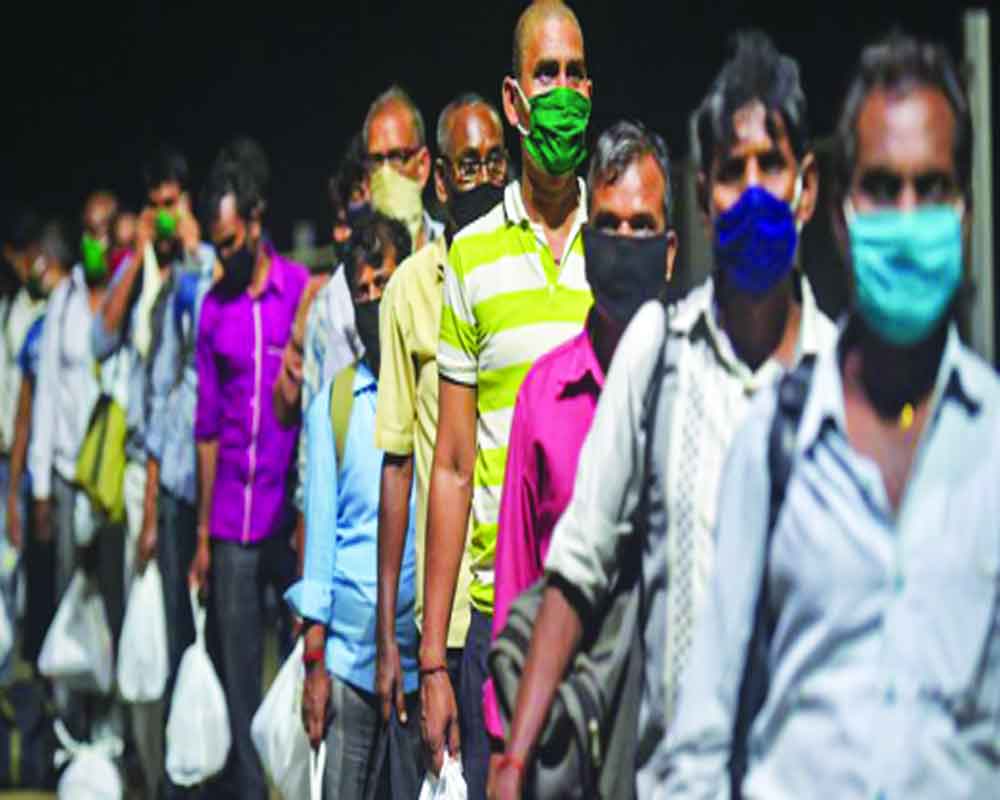Returnee migrants are taking back the virus to their home States which are ill-equipped to handle the pandemic
Had we controlled the exodus of migrants, either by holding them at their work sites or arranging a systematic transport mechanism to ferry them back when COVID-19 cases weren’t spiking enough, then we wouldn’t have had the upward curve that we have today. Given the high infectivity of the virus and the prolonged exposure of migrants to it on roads, at stations and at crowded camps, the returnees are all testing positive and taking the disease burden to their home States which do not have the health infrastructure to combat it. This poses a serious threat to containment protocols in rural India. Even if the returnees are quarantined and kept separate, are there enough hospitals and facilities to treat them or are we looking at a spilling at the seams scenario? With most being asymptomatic, random testing in Bihar revealed that one in four workers, who made it back to their home State from Delhi, were infected with the novel Coronavirus. Until May 17, the authorities had tested 8,337 migrant workers, who returned from north Indian towns where they worked. The infection rate was eight per cent, which is double the national average of four per cent. This after the arrival of 300 special trains. Another 500 trains are expected over the next week. Add to this the number of those walking home or crowding in a bus. An estimated 2.2 million from Bihar migrate to other States, according to the 2001 census. Most of them work in hotspot States like Kerala, Delhi, Rajasthan and Maharashtra apart from those who take up jobs in the Middle East. Given these huge numbers and the sick returnees expected, Bihar’s health infrastructure could be highly stressed as it was ranked at 20 out of 21 States on the Niti Aayog’s Health Index report of 2019. For its 120 million population, it currently has four operational COVID-19 test centres, three in Patna and one in Darbhanga. There are only nine Government medical colleges and hospitals. Neighbouring Uttar Pradesh, too, has the lowest availability of beds and having received 16.5 lakh workers since March 1, any surge can take it to tipping point. Consider that it has the highest population per doctor with one allopathic doctor serving 3,692 people, as against the WHO’s recommendation of one doctor per 1,000 patients. With 19.84 lakh migrants registering for inter-State movement, Rajasthan, itself among the worst-hit, is finding it difficult to manage screening, sampling and enforcing quarantine of returnees. Having been at the frontline of the battle from the very beginning, even achieving success with Bhilwara, its administration is stretched and struggling to replicate the same model too many times and could just get swamped. As people flee an urban contagion, these beleaguered States have another burden piling up, that of rehabilitating the healthy or recovered with jobs or doles as MGNREGA work may just not be enough.
Even now our preparedness, despite voluntary efforts by the private sector, is confined to cities. The Centre did ask State Governments to set up temporary hospitals, increase the number of beds and set up isolation wards but many do not have the capacity to expand. There’s also a shortage of protective equipment for health workers. Besides, all doctors are not skilled or trained enough in COVID-19 protocols. The less said about primary healthcare centres in villages the better as they can hardly handle any emergencies, let alone an outbreak. Yes, we need a three-tiered approach to rebuild a health pyramid in the long-term but a reverse migrant influx means straining whatever little resources one has. Of course, not that ingenuous solutions have not been found within the prevailing matrix as Odisha has shown. By now an expert at handling most natural disasters, Chief Minister Naveen Patnaik has ensured the State has 34 Covid hospitals with 5,493 beds and 296 ICUs. He has plans to increase the number of beds to 10,000. There are 14,795 temporary medical camps with 6,28,686 beds in 6,798 gram panchayats for quarantine and isolation of people returning from other States. To meet the increasing requirement of staff, the State Government has also enrolled 1,039 medical graduates, students and other professionals. And in a historic move, it delegated powers of district collectors to sarpanches of Gram Panchayats to ensure smooth return of workers and their proper monitoring under quarantine. If anything, the pandemic has showed us that innovative thinking, decongestion of worker settlements, preventive protocols and an immunity-boosting plan for rural folk should have been initiated at all levels to arrest the spread. Lockdowns allowed that time. For if the countryside and communities are porous, one dreads to even hazard a guess on the consequences.


























